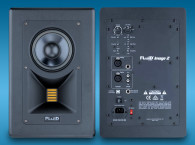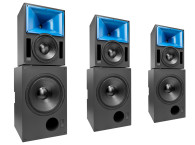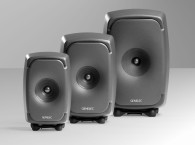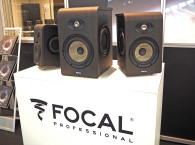This is one for audio history’s books. 25 years since Meyer Sound launched the HD-1 near-field monitor, one of the company’s most successful products and certainly one of the most respected and long-lasting studio standards, the Berkeley-, California, based company introduces a new studio monitor, this time in response to the needs of a very special client.
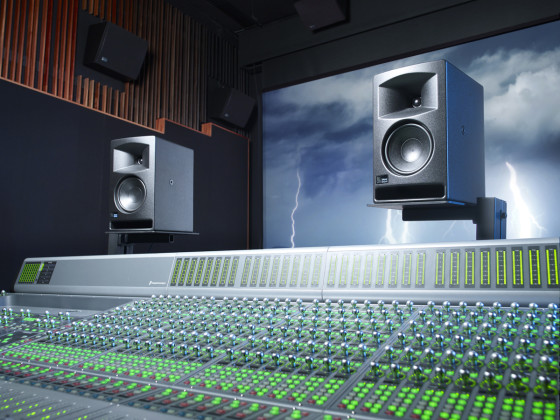
Meyer Sound was tasked by Skywalker Sound in California to create “a new studio monitor with precision translation, exceptional power, and a great price point”. The resulting product, according to Meyer Sound allows “tremendous accuracy for everything from the intricate details of dialogue to dynamic music tracks to explosive action sequences.” Built with the highest quality materials and quality control in Meyer Sound’s facilities in California, Amie is introduced as “the ideal studio monitor for film, broadcast or gaming post-production.”
“Amie brings an incredibly smooth response across the spectrum,” says Leslie Shatz, Wildfire Post Studios sound designer and re-recording mixer who has worked with a beta version of Amie. “It is very accurate for dialogue EQ evaluation in postproduction and despite its light weight, it can handle as much power as I need even when monitoring very loud sequences. And most importantly, its translation is spot-on when I listen to my work in larger mix theaters including the Meyer Sound-equipped Wildfire South Stage.”
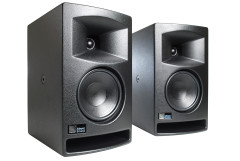 Designed as a linear sound system to reproduce every sonic element with utmost accuracy and consistency, Amie extends the exceptional translation of the Meyer Sound Acheron screen channel line to studio monitoring. Equipped with modern class-D amplification, Amie features a similar driver choice to the HD-1, introducing an innovative waveguide design and a rounder cabinet design in order to achieve a more uniform coverage and precision imaging.
Designed as a linear sound system to reproduce every sonic element with utmost accuracy and consistency, Amie extends the exceptional translation of the Meyer Sound Acheron screen channel line to studio monitoring. Equipped with modern class-D amplification, Amie features a similar driver choice to the HD-1, introducing an innovative waveguide design and a rounder cabinet design in order to achieve a more uniform coverage and precision imaging. Without revealing more technical specifications for the moment, Meyer says that Amie’s extremely flat frequency and phase response and low distortion, allows sound professionals to listen for longer periods of time without the typical strain and fatigue. Every monitor will be individually tested and calibrated before shipping.
Amie will begin shipping in November and orders can be placed directly via the Meyer Sound online store and “will be filled on a first-come, first-served basis,” they add. One thing we know for certain, following the HD-1’s successful career, every single studio monitor manufacturer on earth is going to order a pair or two just in order to be able to make comparison tests!
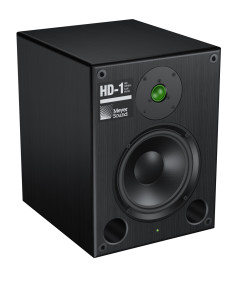 Background on the legendary HD-1
Background on the legendary HD-1The HD-1 self-powered near-field audio monitor is one Meyer Sound’s most successful products and one of the most resilient industry standards. The HD-1 was launched by Meyer Sound in 1989. The original prototype, developed years earlier, was created as an ultra-linear testing device to be used in-house for evaluating instrumentation microphones in the SIM audio analyzer. When news about the HD-1 reached Roger Nichols, legendary recording engineer best known for his work with Steely Dan, Nichols asked John Meyer to develop and release it as a studio monitoring product. Nichols first used the HD-1 on recording sessions for Rickie Lee Jones’ Flying Cowboys.
Designed for ultra-precise near-field monitoring and optimized to approximate a point-source radiator, the HD-1 success lies on its exceptionally broad directivity with a generous “sweet spot”, patented circuitry minimizing time delays and deviations from linear phase and exceptional linearity across critical frequencies.
The HD-1 incorporated a two-channel power amplifier and a sophisticated active crossover with optimized pole-zero filters for acoustical transparency and a flat frequency response. The power amplifier features complementary MOSFET output stages and operates at class A at low to moderate levels (less than 90 dB SPL) and class AB at high levels.
The HD-1 delivers a high peak SPL with a dynamic range of over 100 dB, with extremely low distortion. Its free field frequency response is flat (within ±1 dB) from 40 Hz to 20 kHz, with each unit being individually calibrated at Meyer Sound's Berkeley, California factory. The HD-1 has an active, balanced input that is switchable between a +4 dBu and –10 dBV nominal operating level.
The HD-1's transducers include a low-frequency 8-inch cone driver and a high-frequency 1-inch soft dome tweeter. The low-frequency driver’s ample magnet and 2-inch voice coil yield high efficiency with rapid heat dissipation. The tweeter employs a silk-infused dome that affords smooth frequency responses while minimizing breakup and coloration. Both proprietary drivers are housed in a vented cabinet and individually tested for maximum linearity and low distortion.
The HD-1 helped to popularize self-powered studio monitors when it was first launched. Gradually, the rest of the industry recognized the inherent advantages of self-powering, to the point where today essentially all near-field studio monitors are self-powered.
Over the years, the HD-1 has become a favorite monitor for FOH engineers and recording engineers. In addition, cinema sound designers including Tom Myers (“Cars 2” and “Toy Story 3”), Richard King (“Dark Knight Rises” and “Inception”), and Craig Berkey (“True Grit”) still rely on the linear performance of the HD-1 and its ability to accurately translate from small project studios to larger mixing stages.
The Meyer Sound HD-1 high definition studio monitor was announced as a 2012 TECnology Hall of Fame inductee by the TEC Foundation for Excellence in Audio. The TECnology Hall of Fame “recognizes the innovations and companies that have made significant contributions to the advancement of audio technology.”
http://meyersound.com/product/amie/




